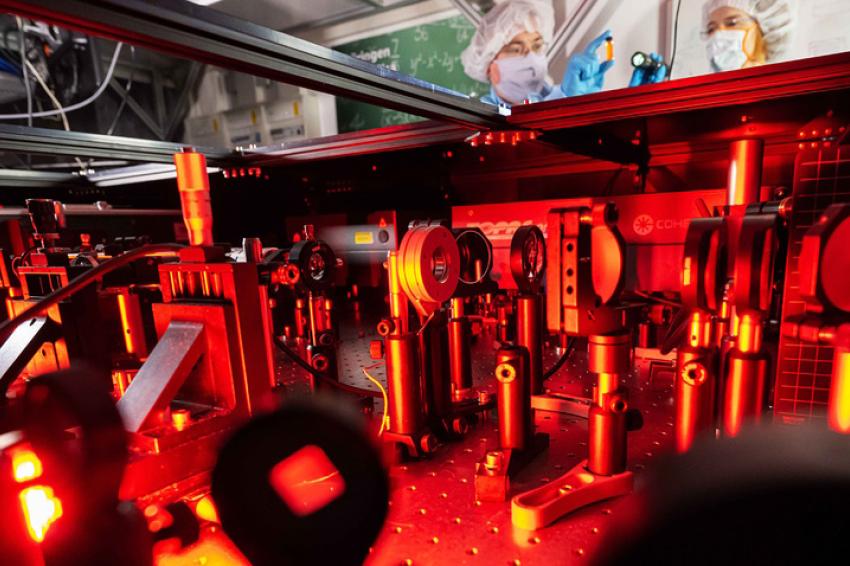€ 11 M-funding for nonlinear optics on atomic scales
20.06.2023 - The collaborative research center on light-matter interactions in Jena will be funded by the German Research Foundation for another four years from July 1, 2023.
If light encouters nanostructures or atomically thin layers, or when the light intensity is extremely high, a precise scientific description of the interaction is still possible for many systems. The CRC 1375 NOA – Nonlinear Optics down to Atomic Scales – at the University of Jena has been working on the development of such theories and their practical implementation since 2019 in cooperation with the Fraunhofer Institute for Applied Optics and Precision Engineering IOF and Leibniz IPHT in Jena, but also with the Humboldt University Berlin and the Technical University of Munich.
Phenomena of nonlinear optics occur when laser light hits matter with extremely high intensity. In addition to the original laser beam, the interaction with the material’s charge carriers also produces radiation of shorter wavelengths – an effect that increases with increasing intensity and is therefore referred to as nonlinear.
In the CRC, fundamental nonlinear optical processes of light-matter interaction are investigated down to the atomic level. For this purpose, theoretical methods, procedures and numerical schemes were successfully developed and applied in the first funding phase, and artificial matter shaped with atomic precision, such as atomically thin and quasi-two-dimensional layers, also known as 2D materials, one-dimensional nanowires and particles or quantum dots, and their nonlinear interaction with light were experimentally investigated.
After these systems have been analyzed and described individually, NOA will investigate systems with mixed dimensionality in the second, eleven-million euro funding phase: These include chemically or electronically modified nanowires or foils, single photon emitters in 2D materials, or atomically thin layered materials. The aim is to tailor the respective nonlinear optical response. New to the CRC is research in the field of quantum optics.
“With this combined approach, NOA will be able to establish new paradigms for nonlinear optics down to atomic scales, not only in terms of fundamentals but also in terms of applications,” says the future NOA spokesperson Prof Stefanie Gräfe.
If this succeeds, attractive applications will emerge, ranging from tiny nanolasers and extremely compact X-ray sources to the optical detection of a few atoms. In the end, it might even be possible to observe chemical reactions between individual molecules in real time – a dimension that linear optical systems cannot penetrate.
Contact
Leibniz-Institut für Photonische Technologien e.V.
Albert-Einstein-Str. 9
07745 Jena
Germany
+49 3641 206-00
+49 3641 206-099







